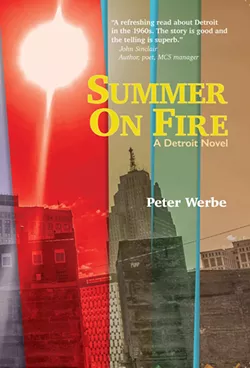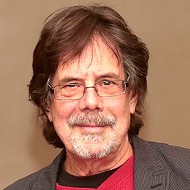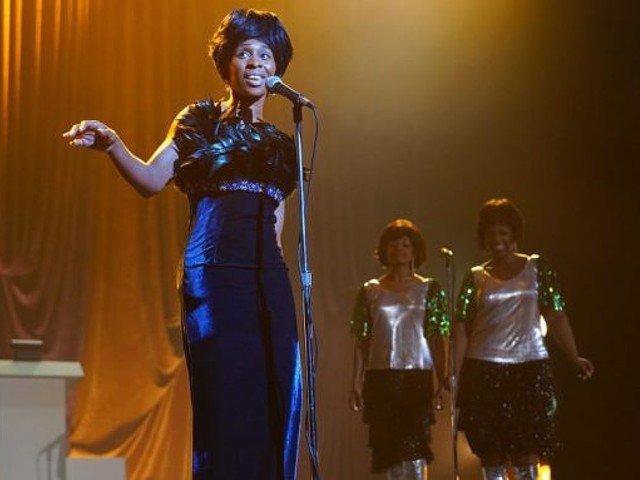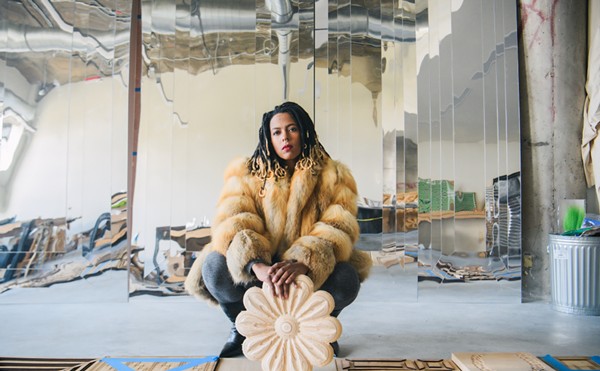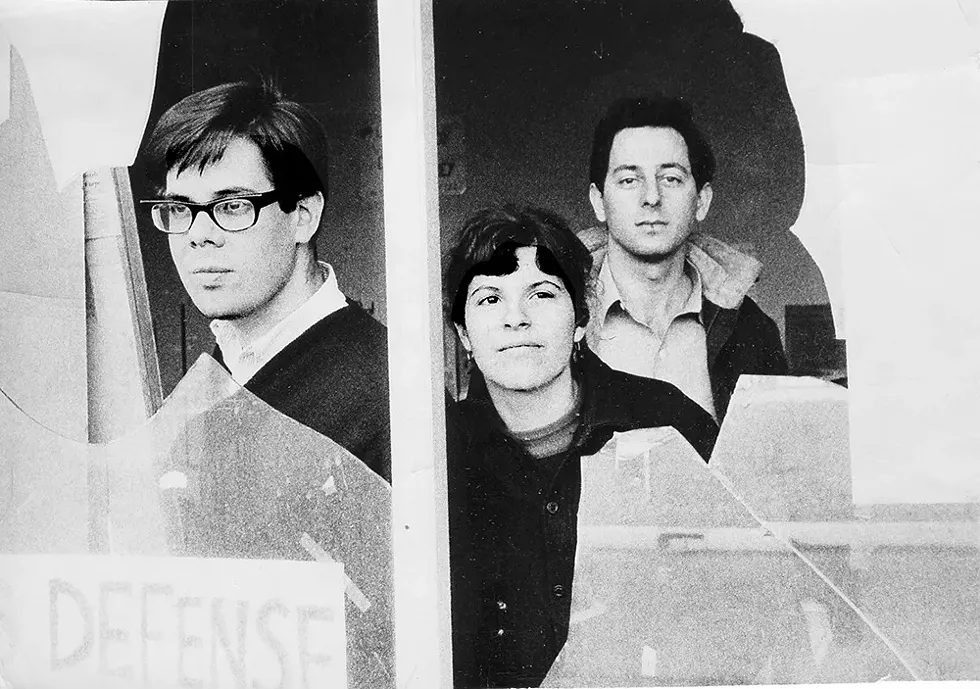
Peter Werbe is a longtime Detroit political activist, a retired WRIF talk show host, and member of the Fifth Estate magazine editorial group. His new book, Summer on Fire: A Detroit Novel, is out now. In a summer marked by scorching temperatures and an urban uprising, Werbe's characters are thrust into tumultuous episodes of the 1967 Detroit rebellion, anti-war demonstrations, fighting fascists, rock 'n' roll at the Grande, drugs, anarchism, the White Panther Party, Wilhelm Reich, and a bomb plot that provides what former Metro Times senior editor Michael Jackman called "a people's history and radical folklore of Detroit." This excerpt follows a huge demonstration opposing the Vietnam war that marched down where undercover cops set up one of the book's characters for a vandalism bust, and busted him up in the process.
June 19, 1967: On Monday morning, Paul and Michele awoke at 7 a.m. so they could arrive at Detroit's Recorder's Court to show support for Malik and John. Their arraignment was scheduled for 9 a.m., and Paul and Michele rode downtown to the hearing with Jim Connolly, who was representing the two defendants, in his Buick Skylark.
"Cool car," Michele said, surveying the commodious interior, comparing it with her cramped VW Beetle. "What kind of mileage does it get?"
Connolly shrugged, indicating that he didn't know or care. Gasoline was 32 cents a gallon. He pulled up alongside the court building and parked in a spot marked Police Vehicles Only.
So-called proper attire was required for entrance to the court, with no jeans allowed. Michele wore a simple summer dress. Paul wore a pair of dress slacks, a short-sleeved seersucker blue shirt, and a dark blue sport coat he bought at the Salvation Army thrift store on West Lafayette Street years before, figuring he needed it for weddings and funerals. He wore this ensemble when he and Michele were married in Lansing four years earlier.
Recorder's Court was the justice system's equivalent of the city's Receiving Hospital. It was an institution where mostly poor Black people met the law administered almost exclusively by white cops, prosecutors, judges, and lawyers.
Although the courtrooms were generally quiet, the hallways were chaotic, filled with anxious families, babies crying, and angry shouting. Court-appointed defense attorneys huddled with their poor clients trying to convince them to take a plea deal offered them rather than risk the wrath of the judges who wanted to dispense what they considered justice, expeditiously. That meant clearing their docket quickly so they could enjoy a long, bourbon-drenched lunch and leave early to play golf in the suburbs.
Defendants having the temerity to ask for a trial, even one without a jury, slowed down the process, creating a log jam of cases, meaning a shorter lunch break and less golf for the judge, who at sentencing, vindictively ensured that the convicted paid the price. Recorder's Court judges worked under the assumption that if the cops arrested you, particularly if you were Black, you were guilty as charged.
Recorder's Court Judge Robert J. Colombo called the court to order at 10:15 a.m. "Sorry, gentlemen," addressing the white attorneys. "I had pressing business elsewhere, but we can proceed as scheduled." He had been tarrying over a late breakfast with prosecutors at Jacoby's, a nearby restaurant hangout for those initiates of the justice system where usually the only Black people on the premises bussed the tables and washed the dishes.
"Call the first case."
Fortunately for those waiting since 9 a.m. for Malik and John to be arraigned, their cases were the first to be heard. There were many more prisoners waiting in the holding cells because the weekends were always busy for the cops who brought in a couple hundred people arrested for mostly misdemeanors, but some felony charges.
Malik's friends were shocked to see how swollen the left side of his face was, as were his mother and father, who took the day off from work to come to court to support their son.
The judge banged his gavel down and looked at Malik. "You're charged with the serious crime of felony assault on a Detroit police officer, young man. Now, why would you do anything like that, particularly since he is a Negro officer? You should be proud of him." He made no mention of Malik's face.
Connolly jumped to his feet. "I object, Your Honor. That's what he's charged with. I ask that you not assume his guilt before you've heard the facts of the case."
Judge Colombo glared at Connolly. Damn liberal lawyers, he thought, always defending Negroes and communists.
"OK, then, how about we bind your client over for trial. Twenty thousand dollars cash bond, and we'll set the court date at, let's see, November 15." That meant Malik could spend the next four months in jail unless his family came up with the bail money.
"Or," Judge Colombo smiled grotesquely, "maybe you can work out something with the prosecutor that will save us all a lot of time and aggravation. I hate trials. You weren't thinking of bringing this to a trial, were you, Mr. Connolly?"
"I haven't decided, Your Honor," the lawyer responded glumly.
"Alright, you boys get together," he said genially addressing Connolly and the prosecutors, "and let's talk about this again after lunch, maybe around two o'clock. Next case."
Next case was John Wood's, which the judge also sent to negotiations to avoid further court time. Both John and Malik were manacled and escorted back to a holding cell by bailiffs.
Connolly and two assistant Wayne County prosecutors with whom he had attended the University of Detroit law school in the late 1950s, greeted one another cheerily and opened the door to a room with a frosted glass pane on which was stenciled, "Jurors Only."
Outside the courtroom, the defendants' friends talked with Malik's parents about what happened based on Mick's description of the arrest.
Lucius Thompson, Sr. was a physician with an office on Kercheval Avenue in one of Detroit's poorest Black neighborhoods on the city's East Side. He chose this location purposely as a commitment to bringing scarce medical services to people desperately in need of them.
His wife, Concetta, an English teacher at Detroit Central High School, earned a master's degree in education from Howard University in Washington, D.C. Dr. Thompson received his medical diploma from Wayne State University.
Just then, Sgt. Jerome Evans, Malik's arresting officer, walked out of another door with a frosted pane. Dr. Thompson knew him. "Hey, Jerry," he called out to a very uncomfortable Evans. "Let me talk to you a minute."
"I gotta go, man. I gotta lot of other cases I have to prepare for."
"Just take a minute. I want to know what happened to my son's face." He'd already heard the account from Mick, but wanted to hear what the man who he saw every Sunday at the King Solomon Baptist Church on 14th Street had to say.
King Solomon was a large, historic African American church that promoted civil rights and was a center of Black organizing for the United Auto Workers during union recognition campaigns in the late 1930s and early 1940s. Sgt. Evans and his family attended services there each Sunday, often sharing a pew with the Thompsons.
"So, what happened when you arrested Lucius? We're always complaining about police brutality against our people and my son shows up looking worse than if he'd been stopped by the Big Four."
Dr. Thompson was referring to a police unit hated and feared in the Black community consisting of a uniformed driver and three plainclothes patrolmen, usually ones who had been on the force for a long time, who cruised the streets of poor Black neighborhoods looking for trouble, much of which they created.
The trunk of their black Buick patrol car contained a carbine for each of them, a machine gun, and usually baseball bats, which they used to wade into unruly crowds. Some Big Four squad members took delight in being known by their street monikers. One, nicknamed Rotation Slim, gained infamy among West Side residents for his random brutality. In 1943, the year of the Belle Isle race riot, he was a 23-year-old rookie who had recently moved North from West Virginia. He and other white officers stood by while white mobs pulled Black people off of streetcars on Woodward Avenue to beat them mercilessly.
Slim earned his nickname partly due to his lean physique, but also because he always carried half of a pool cue, and as a reference to the game of pool called Rotation. When his car stopped a group of young Blacks, he would hit each one of them in succession with his cue as he gave his warning that he was watching them.
"Your boy started fighting back when I arrested him after he broke a bank window, and he hit the street when I took him down," Sgt. Evans explained. Dr. Thompson knew the cop was lying and Evans knew the doctor knew he was lying.
"That's not what his friends say. They say you kicked him in the face while he was cuffed on the ground."
"Hey, who you going to believe, a brother or some jive radical white boys from the suburbs? You know I'm a race man trying to make things better for our people in this goddam racist police force. Do you know how much I have to put up with from these crackers in the department? There are 80 of us Negro officers on the 4,000-member force, and half of the white guys are from the South."
The Detroit police were notorious for their brutality, racism, and corruption, making them not terribly different from any other department in the nation. Evans, early in his career, was assigned to the Negro Crime Unit that was staffed by all Black officers and dealt with crimes committed within what was charitably called the colored neighborhoods. Most of the white cops used a much worse word.
"Man, I'm a deacon in our church," he continued, his voice rising. "I'm a table captain at the annual NAACP fundraiser. I'm an officer in the Negro police association, so I don't know why you are coming on so strong. Your boy fucked up. Right now, that white lawyer is probably gonna get him off with nothing, so maybe winding up with only a little bruise is a break for him."
Evans was angry inside that he had to explain himself to Malik's father. He knew that Dr. Thompson considered himself part of the city's Negro elite, made up of professionals, city and federal workers, and small-business owners, who often thought of themselves as better than those they considered lower-class Blacks. Most were college-educated, while Evans only had a diploma from Mackenzie High School on the city's West Side.
The Detroit police were notorious for their brutality, racism, and corruption, making them not terribly different from any other department in the nation.
tweet this
Dr. Thompson looked at Evans with a calm professional expression of the type he used in his medical practice, while inside harboring exactly the attitude toward Evans the officer suspected he held.
"Hey, I'll even go put in a good word for him with the prosecutor," and with that Evans walked into the room marked Jurors Only without knocking.
Sgt. Evans was paid a salary of $6,000 a year by the City of Detroit. He brought in an almost similar sum through payoffs from pimps, prostitutes, dope dealers, and gamblers. His son, Herbert, who he and his wife, Charlotte, dragged out of bed each Sunday morning to attend services at King Solomon was, unbeknownst to the Evans couple, a member of the Dap-Daddies, a fearsome West Side gang who often fought pitched battles with their rivals, the Ooh-Loos and the Almighty Shakers.
An hour later, Connolly cut a deal with the prosecutors. They presented it to Judge Colombo, who arrived back from lunch at Jacoby's at 2:30 and agreed to the terms. Malik and John would pay a $100 fine, reimburse the bank $200 to replace the window, do 100 hours of community service, and would be on supervised probation for a year.
The judge gave the two a stern lecture about respect for the law and private property and adjourned court early to go play a round of golf at the swank Lochmoor Club in Grosse Pointe.
Hugs went all the way around when Malik and John rejoined family and friends in the hallways still filled with petitioners for justice and their lawyers, who were informed by a bailiff that court was over for the day and they should return tomorrow. They groaned and left.
Malik would later undergo extensive dental surgery to repair the damage Evans' boot in the face had caused.
All of them walked out of the oppressive building together. Connolly stopped at the bottom of the stairs and looked back at the courthouse and told the others, "You know, this is where Clarence Darrow tried the Ossian Sweet murder case." There were blank stares all around, some not even knowing who the famous lawyer was that Connolly mentioned.
Because there were only about eight of them now that Malik and his parents left for home and most of the supporters were satisfied that justice of sorts was done, Connolly invited those remaining for coffee, dessert, and the story of the 1925 Ossian Sweet trial. They went to Jacoby's, where Judge Colombo had consumed three Old Fashioneds two hours earlier at lunch.
Connolly explained that the events of the Sweet case were set in a Detroit that was even more segregated in 1925 than it was in 1967, with a growing Black population restricted to an area known as Black Bottom. Black migrants from the South came to Detroit by the thousands, lured by promises of work in Henry Ford's auto plants, and to escape the harsh Southern apartheid system.
Detroit's West Side was a haven of the Ku Klux Klan that almost elected a candidate as mayor in 1925. He was cheated out of the post by East Side liberal Catholics led by Frank Murphy, who later became the city's mayor, Michigan governor, and finally a U.S. Supreme Court Justice.
Whites were determined to keep Black Detroiters within their confined districts, not just out of racial animosity, but because the value of their homes would be significantly devalued by lending banks if their neighborhoods were integrated.
Dr. Ossian Sweet, a physician at a Black hospital, bought a house on Garland Street, even though he knew that earlier in the spring, houses purchased by Blacks on the West Side were attacked and their new owners driven from their homes by racist mobs. Sweet was determined to live where he chose. To ensure his family's safety, he brought a small armed platoon of relatives and friends with him the day he moved into his new home on Sept. 8, 1925.
The next night, a crowd of neighborhood whites assembled across the street from the Sweet home and grew increasingly vocal and rowdy. When a fusillade of stones thrown by angry residents began striking the house, shots rang out from the Sweet residence, killing one white man and wounding another. The police arrested eleven people in the home, including Sweet's wife, charging them all with murder.
Armed Negroes killing a white man sent the racist daily Detroit newspapers into a frenzy, and the fear among Black Detroiters was that the Sweets and their friends would easily be convicted for defending their home.
However, the national NAACP, led by James Weldon Johnson, saw the case as key to rising African American demands for civil rights. They engaged the services of Clarence Darrow, considered the most dynamic defense attorney in the country, to represent the defendants at trial. Darrow had just lost the famous Dayton, Tennessee "Monkey Trial" as counsel for John Scopes, a teacher charged with violating a state statute forbidding the teaching of evolution.
Connolly was familiar with the court transcripts of Darrow's closing argument to the all-white, all-male jury in the Sweet case, where the famous attorney based his defense on the right of a man to defend his castle, as he put it. Although a mistrial was declared when a minority of the jury held out for conviction, eventually all the defendants were cleared, an amazing milestone in the history of racial oppression.
The Recorder's Court judge in the case was Frank Murphy.
The history of the trial was well known to Malik's father, as well as to Sgt. Evans. It was even more so to their parents, who kept abreast of the case as it happened, reading the Black-owned Detroit Herald. The proceedings created intense nationwide interest in Black communities and was followed avidly in the hundreds of papers comprising the Negro press that kept their readers across the country informed about the Sweet case.
As the group left the restaurant, Paul turned to Connolly, "Thanks, man, I wish there was some way we could repay you."
"You can," he replied with a big smile. "How about a ride on your motorcycle."
"You got it!"
Summer on Fire: A Detroit Novel is available now from Black & Red Books. Werbe will speak as part of a virtual book tour at 6 p.m. on Friday, March 12 hosted by Source Booksellers. Tickets are free or $20 with a copy of the book. Werbe will also speak with journalist Harvey Ovshinsky at 7 p.m. on Tuesday, March 16 in an online panel hosted by The Book Beat. Tickets are free.
We have a new events newsletter! Find out the best things to do in the area every Thursday in your inbox.

